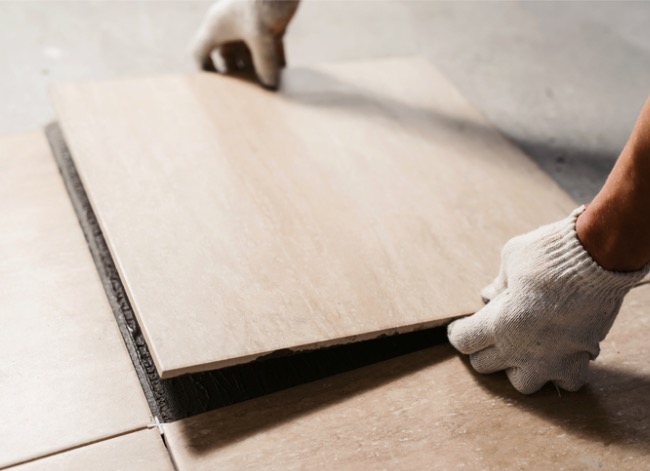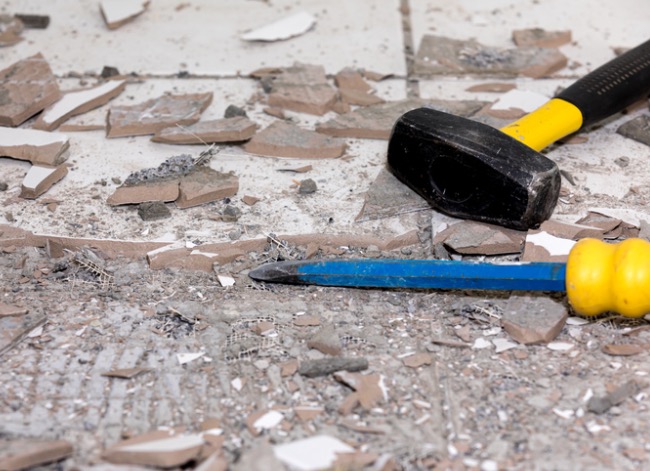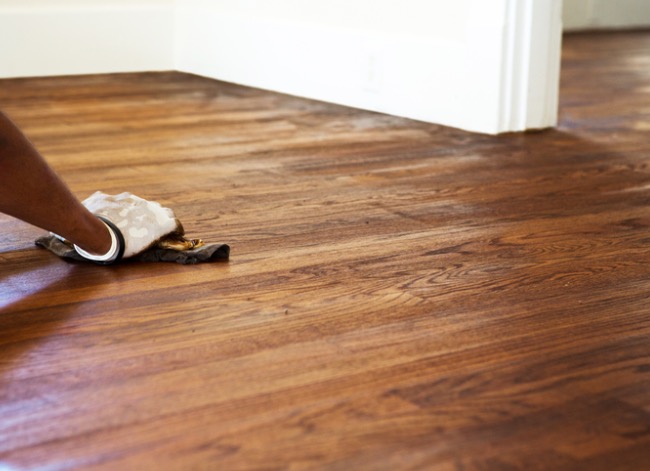We may earn revenue from the products available on this page and participate in affiliate programs. Learn More ›
Your flooring problems might not be as unique as you think. Floors come in many shapes, sizes, styles, and materials, and everyone has a favorite type. Some folks enjoy the coziness of carpet, while others prefer the clean, rustic look of hardwood. In some areas, large tiles stretch from one end of the house to the other. While floors might be unique, the issues they cause DIYers and homeowners are not. Here are eight common floor problems that can happen at any time, and recommendations about what you can do to fix them.
How to Fix a Squeaky Floor
Despite their beauty and warmth, wood floors can be loud and squeaky. Generally, the squeaking occurs when the hardwood dries out and shrinks, leaving room for floorboards to move. As the boards move underfoot, they rub against the nails holding them down, causing squeaks and groans.
The easiest way to fix a squeaky floorboard is to find the culprit and sprinkle baby powder or powdered graphite, such as AGS Automotive Solutions’ powdered graphite lubricant, over the squeaky area. Be sure to work the powder between the boards to ensure it penetrates and stops the squeak.
How to Fix Popping Tiles
Tiles popping loose from the floor is another common tile flooring problem that plagues DIYers, and there are a few reasons it might happen. For instance, the tile installer may have used the wrong tile underlayment materials. If he laid them over a plywood or wood subfloor, both of which flex, it may cause the tiles to pop loose. Also, the installer might’ve used the wrong thinset or mastic, or they simply didn’t apply it properly.

Carpet, hardwood, tile, vinyl, and laminate flooring.
Bob Vila has partnered with Empire Today® to help you easily get beautiful new floors at a great price.
Free In-Home Estimates
DIYers will have to determine the problem before they can fix the tiles. If the issue is poor adhesion, grind or chip the existing thinset off the floor and tile and use the correct product. If there’s a plywood subfloor, it might be necessary to remove the tiles, lay down cement board, and then install the tile all over again.
Related: Here Are All The Ways You’re Accidentally Ruining Your Tile

How to Fix Buckling Floors
One issue that folks in humid climates might deal with is a buckling floor. A buckling floor happens when a wood floor absorbs too much moisture (either from a leak or humidity), causing it to swell. Since each board is locked between several other boards, there is nowhere for it to go but up, causing individual floorboards to buckle against each other.
The first step in dealing with a buckling floor is to get the humidity under control. A dehumidifier works wonders, though it might take several days to make an impact. (The Frigidaire 70-pint dehumidifier, for example, was the best overall pick in our researched guide to the best dehumidifiers for basements.) If the dehumidifier doesn’t solve the issue, it might be necessary to remove the buckled floor and replace it.
Related: New Floors? 5 Top Hardwood Options to Know
How to Repair a Chipped Tile
Tiled floors are durable and hard-wearing, but if someone accidentally drops a heavy vase, a bowling ball, or any number of hard, heavy objects, these tiles can crack or chip. Not only does this look bad, but it can also be a safety issue for bare feet—as well as a trip hazard.
The only way to repair a chipped or broken tile properly is to replace it. Wearing gloves and safety glasses, carefully remove the tile by chipping away with a hammer and masonry chisel. Chip out all of the existing thinset as well. Save a chunk of the tile as a reference for comparing new tile at the home improvement center. Once you find a replacement, use the appropriate thinset to lay it in place.
Related: The Best Options for Bathroom Floor Tile

How to Fix Scratched Wood Floors
If scratched floors are plaguing your home, you’re not alone. Scuffs from furniture legs, high-speed pets, and regular wear and tear can dig into the finish and even the actual flooring material. With a little elbow grease, you can bring things back to normal in a weekend.
The scratch-fixing methodology depends on the scratch. Buff light scratches out with a floor wash and cloth. For deeper scratches that haven’t quite penetrated the wood, clean the floor and apply a floor refresher. For scratches the do nick the wood, try using a wood scratch cover, walnuts, or matching the stain before applying a hardwood reviver.
Fixing deep scratches might take more than a weekend, as the floor might require a complete hardwood refinishing. This involves stripping the entire floor, sanding the affected area, staining, and sealing the floor.
Related: The Best Stainable Wood Fillers of 2025 for Repairing Furniture, Decks, and More
How to Fix Faded Hardwood Floors
Everyone appreciates natural light, and the more we can get in our homes, the better. However, sunlight pouring through the windows can fade a hardwood floor, resulting in discoloration and cloudiness.
The simplest solution for a mildly sun-faded hardwood floor is to use a water-based refresher, such as Rejuvenate’s Professional Wood Floor Restorer. These products are designed to bring the shine, color, and luster back to faded or aging floors. Simply apply the product to the surface with a sponge and buff it lightly to restore the floor’s good looks.

How to Fix a Cracked Concrete Floor
Believe it or not, it’s absolutely normal for cracks to show up in concrete surfaces. But just because it’s normal doesn’t mean you have to live with cracks in your floors.
Luckily, fixing cracks in concrete relatively easy. First, use a masonry chisel to chip the crack into a V-shape down its entirety. Then, use a concrete crack sealant to fill the crack and seal it off. Sashco’s Slab concrete crack repair sealant, for example, was one of the top performers in our researched guide to the best concrete crack fillers. Be sure to match the sealant’s color to the existing concrete so the repair blends in.
How to Remedy Floor Sinking
Unfortunately, one of the most common floor problems is also one of the most difficult to fix. A sinking floor occurs when the support framing underneath the floor begins to deteriorate from age or moisture. This can be from a rotting post, a weakened beam, or a number of other issues.
Whatever the issue might be, it’s important to identify the cause and fix it. Rotted posts can be replaced with concrete lally columns, while weakened joists can be joined to new lumber to provide more strength. Generally speaking, both scenarios require jacking up the existing framing with a bottle jack, which can be more than some DIYers are comfortable handling. If that’s the case, be sure to call in a pro to take care of the issue before it’s too late.


